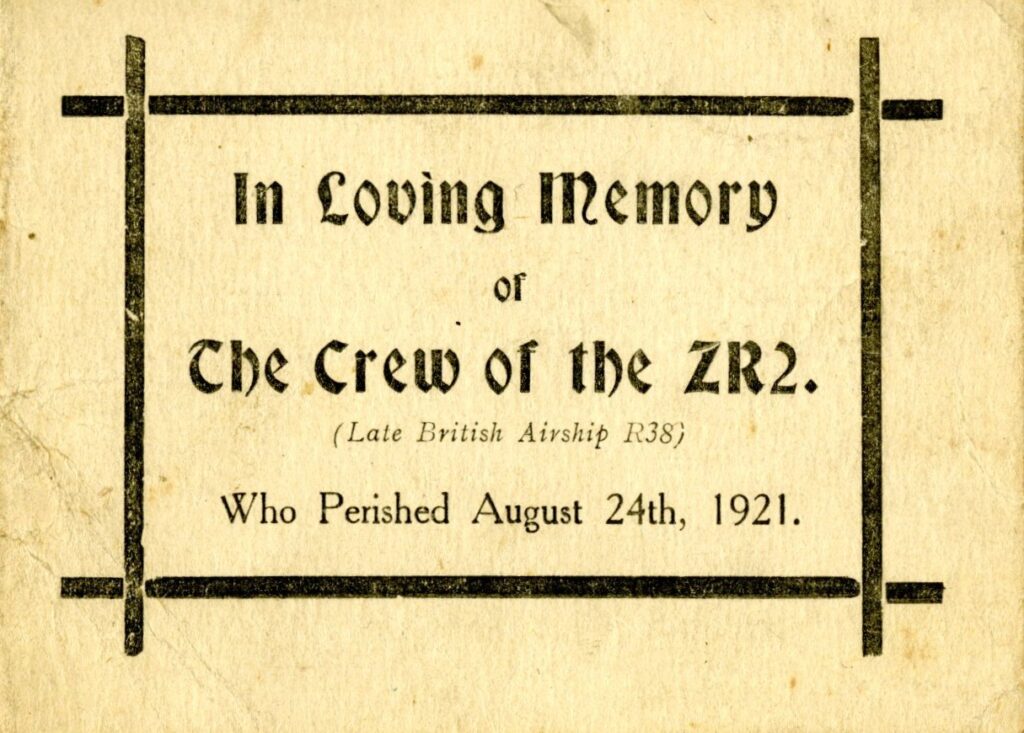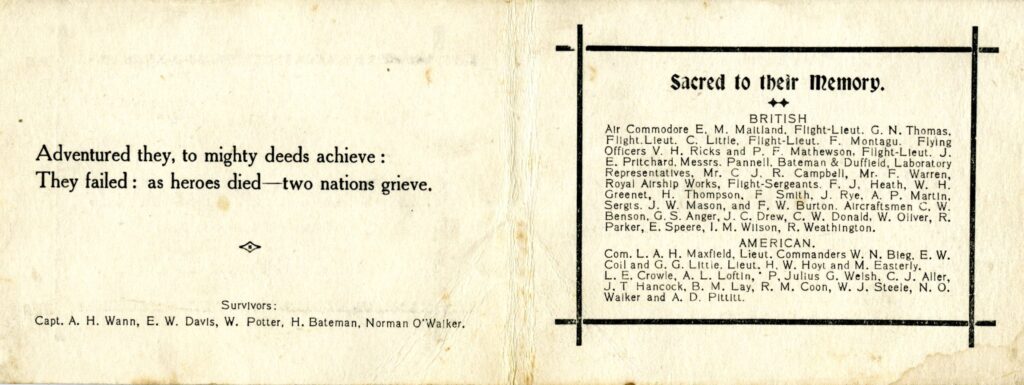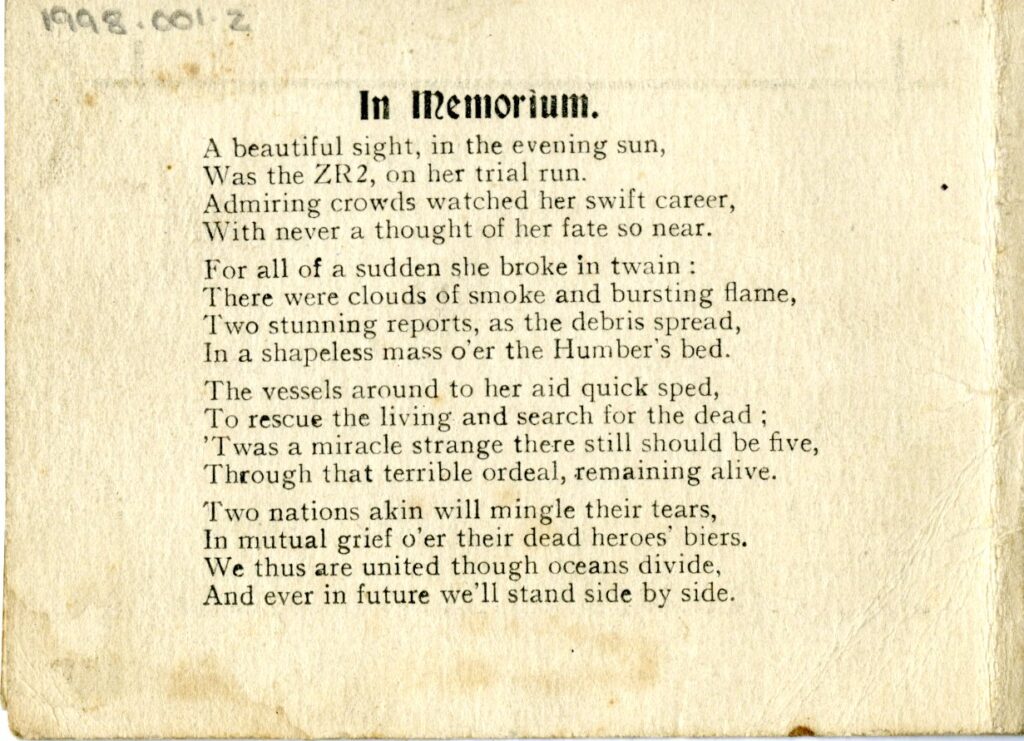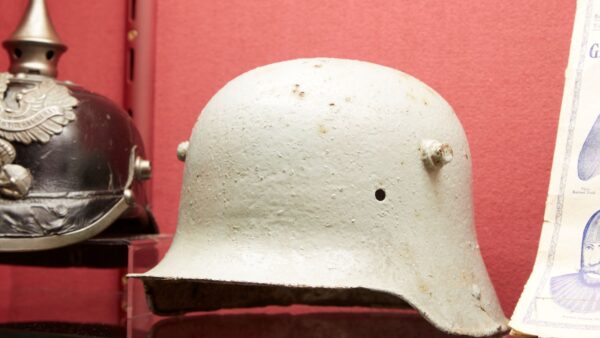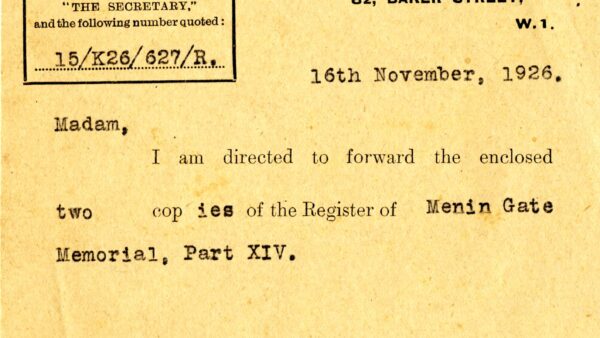The Fate of the R.38 or ZR-2
Ed Tooker, Documenting Northern Lincolnshire's History Project Volunteer
If you look closely at a display in the Local History Gallery, situated amongst all kinds of fascinating artefacts, you will find a small piece of wreckage that tells a much bigger story. It is the story of a disaster that struck the largest Zeppelin-style airship ever built, when it crashed into the River Humber in front of thousands of horrified on-lookers on 24 August 1921. It tragically led to the deaths of forty-four men and one black cat – the airship’s mascot Snowball.
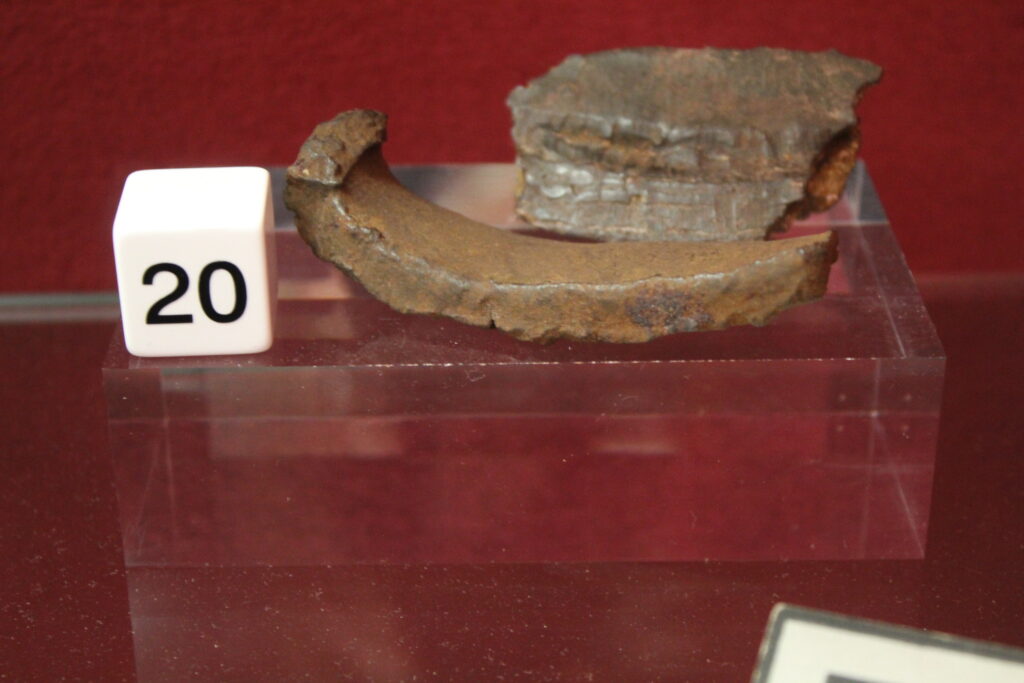
This aircraft, the R.38/ZR-2, was 695 feet long (over 200 metres), and cruised at a speed of 60 nautical knots or nearly 70 miles per hour.
The large size was not the only unusual feature of the aircraft. It also had two names. To the fledgling Royal Air Force, formed only three years earlier, it was known as the R.38. To the United States Navy, who had bought the craft, it was known as the ZR-2. This unusual situation occurred because the British government had originally ordered four R.38’s to be built in 1918. When the order was cancelled in 1919 as a peacetime economy measure, work had only begun on one airship. At the same time, the United States Navy were looking to add two rigid airships to their fleet. Originally this was to have been 2 existing German airships. But after these were deliberately destroyed by their crews, an order was placed with Zeppelin for a new craft to be paid for by the Germans. The plan included building a second craft in America. When the American’s heard about the cancellation of the R.38 project, they agreed to take over completion of the partly built R.38 instead.
The R.38/ZR-2 had been built in Cardington in Bedfordshire before moving to the airbase at Howden in East Yorkshire for the final test flights. On the R.38/ZR-2’s fourth and final test flight before it was due to complete the transatlantic voyage to its new home, disaster struck. Whilst flying over the Humber Estuary, the R.38/ZR-2 broke in two, exploded and fell on fire into the river. Only five people out of the forty-nine British and American crew onboard survived. The rest fell victim to the fire on board or the fuel and wreckage burning on the river’s surface near Hull.
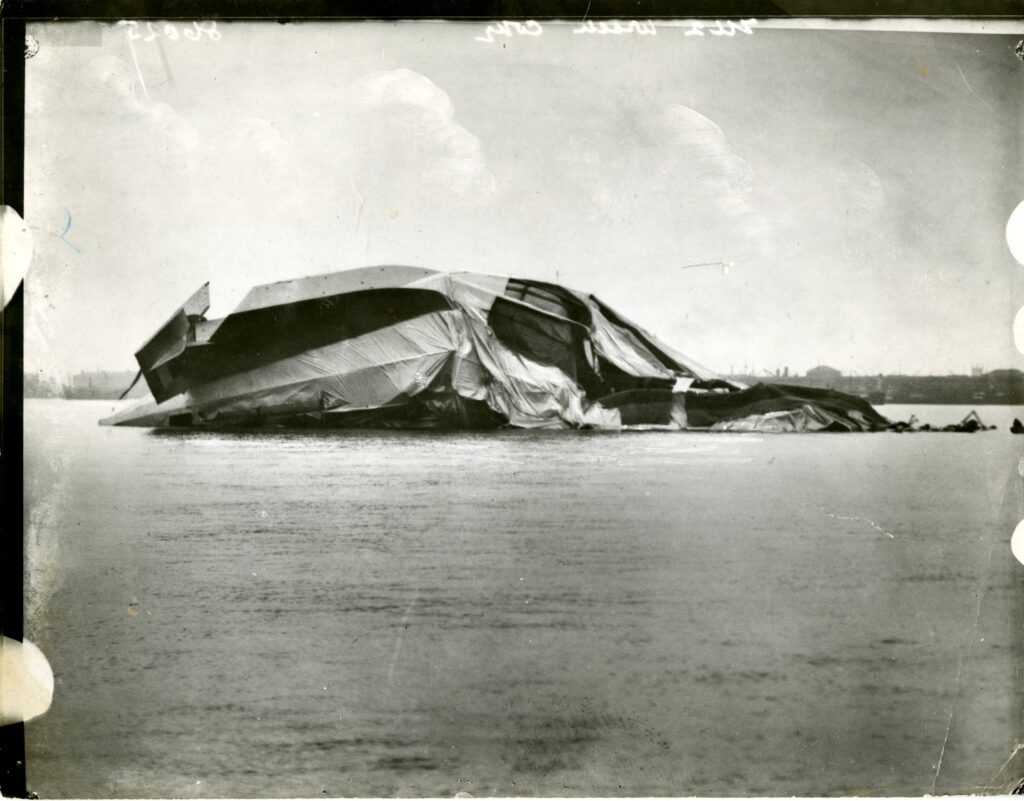
The photograph above is one of several objects in the Museum’s collection related to the disaster. Captain John Spafford, at that time a station photographer at RAF Howden, was due to have been on the test flight but had to stand down at the last moment. Instead, Captain Spafford was one of the handling party when R.38/ZR-2 took off on her last flight.
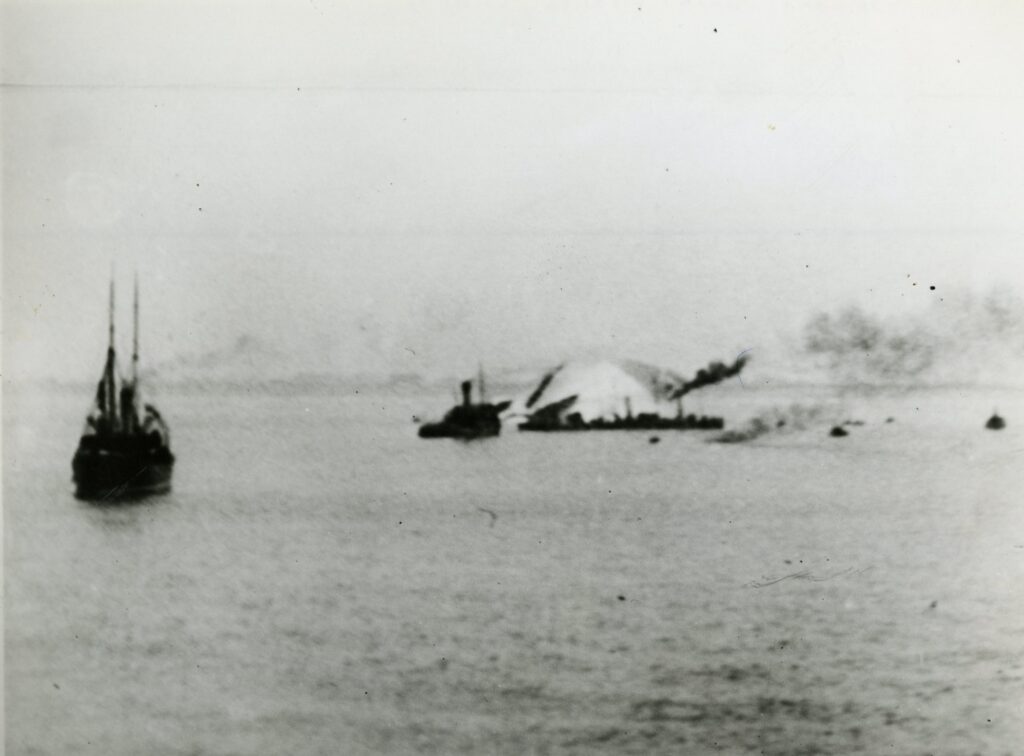
Also in the collection is a copy of the card from the memorial service for those who lost their lives in the disaster. It contains a list of the British and American service personnel and the British civilian engineers who were onboard the airship. Inside there is a list of survivors and two poems. View this record on CollectionsOnline.
As well as the fragment of metal mentioned above, the collection also includes three fragments of fabric from the airship. Though the large sections of the aircraft were salvaged, lots of smaller fragments were collected and saved by members of the public. Some parts were remade into commemorative objects including ashtrays and candlesticks.
With a Small Grant from the Humber Museums Partnership, the Carnegie Heritage Centre in Hull has created an on-line exhibition about the R.38/ZR-2 airship disaster. As well as telling the story of the disaster, and collating memories, the website collates images of objects related to R.38, including wreckage fragments like that on display in the Local History Gallery. The website can be found here.


